
Wisdom-Trek / Creating a Legacy
Welcome to Day 1038 of our Wisdom-Trek, and thank you for joining me.
This is Guthrie Chamberlain, Your Guide to Wisdom
The Enneagram Type Combinations – 4&4; 4&5; 4&6 – Ask Gramps
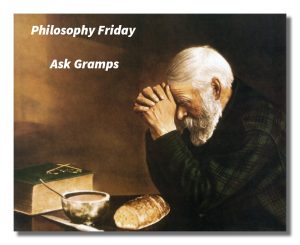
Wisdom – the final frontier to true knowledge. Welcome to Wisdom-Trek where our mission is to create a legacy of wisdom, to seek out discernment and insights, to boldly grow where few have chosen to grow before.
Hello, my friend, I am Guthrie Chamberlain, your captain on our journey to increase Wisdom and Create a Living Legacy. Thank you for joining us today as we explore wisdom on our 2nd millennium of podcasts. This is Day 1038 of our trek, and it is time for our Philosophy Friday series. Each Friday we will ponder some of the basic truths and mysteries of life and how they can impact us in creating our living legacy.
As we continue on this trek called life, sometimes we have questions about life, so our Friday trek is a time when we can “Ask Gramps.” Gramps will answer questions that you would like to ask your dad or granddad, but for whatever reason are unable to. No matter how old we are, I know that all of us would like the opportunity to ask Dad or gramps questions about life in many areas.
Understanding ourselves and how others may interpret life through their paradigm better allows us to interact with each other with more love and compassion. This can be achieved by utilizing a profound tool called “The Enneagram.” The tool that we refer to as the Enneagram (Any-a-Gram) is a circle with nine interconnected points (Ennea refers to 9 and Gram referring to a drawing). Check out today’s or a prior week’s Wisdom Journal for a representation of it. I have also included a copy of “The Enneagram At-A-Glance,” which was compiled by Suzanne H. Eller in today’s Wisdom Journal. If you would like a PDF copy, click on the link in today’s Wisdom Journal located on our website Wisdom-Trek.com.
For additional insight, I recommend the book The Road Back to You written by Ian Morgan Cron and Suzanne Stabile. It is an excellent book about an enneagram journey to self-discovery from a Christian perspective.
We have concluded our deep dive into the nine types which are “The Reformer,” “The Helper,”“The Achiever,” “The Individualist,” “The Investigator,” “The Loyalist,” “The Enthusiast,” “The Challenger,” and “The Peacemaker.” Eight weeks ago, we began a series of episodes on Type Combinations, answering the question, “What are the potential relationship benefits and issues with each combination?” Covering all of the 45 different potential type combinations will take several weeks, but will be valuable in understanding each other, regardless of what type you are and what type those with whom you interact with each day are.
Since we are exploring the Enneagram in detail, I would also recommend reading the Wisdom Journal for each Friday to see the diagrams presented each week. As helpful as the Enneagram is, keep in mind, it is still only a tool and cannot replace or usurp the precepts that are found in God’s Word. All decisions and actions that we make in life must be in harmony with God’s precepts.
So the questions for the next several weeks will be…
“Hey, Gramps, why do people act and react to situations and circumstances in life so differently? How can I gain wisdom to better understand myself and others so that I can love, serve, and minister to them on a deeper level?”
The Enneagram Type Combinations

The Enneagram Type Combinations
Enneagram Type Four (the Individualist)
with
Enneagram Type Four (the Individualist)
What Each Type Brings to the Relationship
As with all double-type relationships, two Fours generally bring the same qualities to each other. Thus, the Level of health of each person is especially important for these types of relationships as are their dominant instincts. Double Four pairs generally make good friends, and deep friendship is something they often bring to their intimate relationships. Fours often feel misunderstood, yet feel a special bond of understanding with other Fours. They share stories of their childhood traumas, their private dreams, and their disappointments. Both types are openly emotional and sensitive to the needs of the others. Both are looking for adequate mirroring, and in a double Four relationship, they have a real possibility of finding it.
Because each person in a double Four couple is so attuned to their own emotions, there is a great deal of sensitivity and respect for individuality and each other’s emotional needs. They have the ability to laugh at themselves and to find amusement with each other in the dark loneliness of their childhood and adolescence. They are not put off by unearthing deep psychological and personal issues. Both are encouraging of the artistic and creative efforts of the other and find it easy to communicate about the most private and intimate issues as they arise. They feel that their relationship is a truly safe space where the other is on a similar emotional wavelength: both feel less alone and less like something is wrong with them personally. Double Fours are highly romantic and idealistic as a couple, and their intimacy has the potential to grow into a grand passion of virtually operatic proportions. Emotional ups and downs, hopes and disappointments, elation and despair, tend to make this couple more focused on itself than on practical life, child raising, or their careers. Enormous candor, deep friendship, and consideration for the unique history and emotional needs of the other are hallmarks of this relationship.
Potential Trouble Spots or Issues
Emotional instability of the relationship itself is the main potential problem with a double Four intimate couple. Each person can be self-absorbed and excruciatingly aware of what he or she is getting (and not getting) in the relationship. Both want to be the focus of attention regarding emotional issues. Both want special handling—and insist on having special needs, and they can resent the other for demanding the same for themselves. Both long for an ideal mate—and the feeling that one has found it—can alternate with depression (and other reactions) when expectations are disappointed. They can get into “Who’s more damaged?” contests, a form of negative competition. Both are more or less secretly looking for a rescuer and can get lost in a morass of emotional drama even if they find one.
For all of their potential sensitivity, Fours also tend to withdraw from others and to withhold their attention and affection when they have a conflict with someone. Fours have a profound lack of trust in others, and this lack of trust can extend even to their intimate partner. A period of testing will invariably happen that may be too much for the other Four to bear. They can be annoyed by the other’s quirks and “sensitivities” and unacknowledged demands. They can be intolerant of the other, making each other walk on eggshells, ironically making it difficult to bring up certain issues with the other.
Double Fours can become moody and incommunicative, passive-aggressive, and disdainful, actually hating the very person they may have been so passionately in love with. Rejecting the other (and feeling rejected) can alternate from both parties. Arguments can spiral out of control, and hurtful things get said until reconciliation becomes difficult, if not impossible. Once certain things are said in the heat of the moment, they can never be taken back. Permanent damage is done to feelings of trust and safety—and to the future of the relationship. Once hope for the relationship dies, it is difficult to resuscitate.
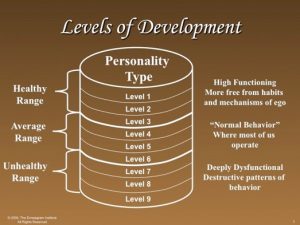
Enneagram Type Four (the Individualist)
with
Enneagram Type Five (the Investigator)
What Each Type Brings to the Relationship
Both types bring a certain richness and special qualities of aspects of human development: Fours bring an artistic and emotional temperament, the habit of introspection and sensitivity to feelings in themselves and others. Both types are private and like depth, and they do not mind taking time to explore things deeply and to savor the richness of their own experience. Enneagram Fours and Fives may well have different interests, but they appreciate different perspectives and respect the other’s intensity and commitment to following their own feelings and interests. Fives bring an inquiring, intellectual temperament, the habit of asking questions and of being interested in a wide variety of things and of being willing to break with old conventions. Fours contribute an appreciation of aesthetics and of the effect that ideas and discoveries have on people: feelings and unconscious processes are powerful and are not to be taken lightly.
Both types can be extremely creative, and both love to share their findings with the other, making stimulating, wide-ranging conversation and open communication a hallmark of a Four/Five relationship, both in the intensity of their conversation and in the sincere interest they bring to their listening to each other. Each type usually brings a noteworthy sense of humor and love of the bizarre and the outlandish that can give their relationship a quirky and unique character all of its own. This is often because they both share an “outsider” status. Fives draw Fours out by showing them other worlds and other perspectives, with a depth that Fours like. Fours help Fives stay in contact with their personal self and feelings. They have a mutual tolerance for whatever the other comes up with, and neither is easily shocked. They generally find each other stimulating and are tolerant of each other’s idiosyncrasies. Both inspire creativity in the other and give permission to the other to be themselves and follow their own inspirations.
Potential Trouble Spots or Issues
The greatest area for discord in a Four/Five pairing is that Fours are emotional types and tend to push for more contact and intimacy, sometimes becoming overly demanding, whereas Fives are thinking types and tend to push for more detachment and space in the relationship, sometimes becoming more reclusive and private. Fours can experience Fives as being too intellectual and feel that Fives are analyzing them rather than sympathizing with their emotional needs and states. They can also feel that Fives are unavailable and detached, uncaring and unresponsive to their needs in their relationship. Fours feel they can also be impractical and take too long to respond when a situation calls for action.
On the other hand, Fives can see Fours as bottomless pits of emotional needs who drain their time and energy. Fives also feel that Fours’ emotionality reflects a lack of rationality or is a sign of immaturity that seems potentially dangerous and out of control. Fours in the lower Levels do not seem safe because of their apparent instability. Fours tend to be easily frustrated with the quality of attention they get from Fives (since they can be preoccupied with their mental worlds, not with the relationship); thus they tend to provoke the Five until they get a response. Fours need to appreciate the minimalist emotional style of the Five, while Fives need to appreciate the Fours’ depth of feeling. Romantic relationships can get very intense quickly and combust. Usually, the Five retreats first, feeling overwhelmed by the Four’s escalating needs and demands. Of course, the Five’s withdrawal triggers more clinging and neediness in the Four, as well as more demands and more endless analysis of the relationship itself. Emotional florid reactions confronting emotional detachment and rational analysis quickly get to an impasse that may spiral into a breakup.
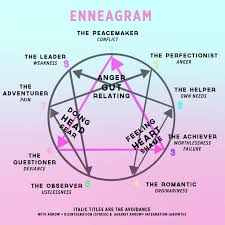
Enneagram Type Four (the Individualist)
with
Enneagram Type Six (the Loyalist)
What Each Type Brings to the Relationship
Both Enneagram Fours and Sixes, have many natural affinities for each other, especially since both are highly emotional and often feel insecure around people. Both tend to have strong, immediate feelings and to act on their unconscious hunches or intuitions. Sixes often misidentify themselves initially as Fours because of the traits that they actually have in common. These very traits can also be ones that they bring to the relationship, enabling them to have an unusual degree of empathy and tolerance for each other. In short, Fours and Sixes can bring to each other the feeling that they are kindred souls, connected by their feelings of abandonment and a certain distrust of others. They may feel like “orphans in the storm” who offer mutual support and reassurance. Rather than energize each other, when they are healthy, Fours and Sixes tend to support and stabilize each other, usually acting as a sounding board for worries and complaints that they feel they cannot air anywhere else.
Fours bring sensitivity, sensuality, and the ability to express emotions openly, including the feelings that Sixes themselves do not know how to express. Fours talk about their inner lives—again, something that Sixes often need to learn. Sixes bring hard work, perseverance, practicality, loyalty, and concern with security to the relationship. They are also often warm and unpredictably playful and able to break through whatever gloom and self-absorption Fours may periodically fall into. Fours give Sixes the sense that they are needed—helping to give Sixes more confidence in their ability to cope with things. Sixes like being practical and they often provide Fours with a platform of some kind to develop their creativity as well as the time and support they may need to work through their emotional issues. This combination creates steadiness and daring, balance and the ability to fill in the gaps for each other—both in their own development and in practical affairs.
Potential Trouble Spots or Issues
As noted above, both Fours and Sixes have issues with feelings of abandonment. Both types in the lower Levels tend to be emotionally reactive, critical of others, pessimistic, and easily overwhelmed. While they may not often talk about it, they may test each other in various ways in an attempt to discover how loyal the other will be to them. Both types may also begin to subtly withdraw attention and affection from the other as a way of defending against the hurt of potential abandonment, should it occur. But in this, both types have a tendency to create a self-fulfilling prophesy in which their fears and reactions bring about the very thing they are consciously trying to avoid. Both types can become codependent, and their reliance on each other may not result in development for either: Fours do not automatically become more practical, and Sixes do not become more insightful about themselves.
Another potential trouble spot for Fours and Sixes lies in the area of change and tolerance for change. Generally, Fours are more interested in self-exploration and self-development, and they tend to be more adventuresome in their tastes and in what they allow themselves to think and to experience. Sixes tend to be more conservative and resistant to change and to personal exploration, making for potential conflict with Fours, who may feel that Sixes are holding them back and stifling their creativity and development. Both can be pessimistic and self-doubting, gloomy and mistrustful of others. The complaint that Fours typically have about Sixes is that they are not free-spirited and romantic enough, whereas the complaint of Sixes about Fours is that they are too undependable and act too much on whims and are not emotionally stable enough. Both types are reactive, and conflicts can escalate quickly. Misunderstandings can lead to projections and massive over-reactions.
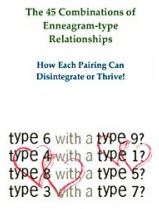
That covers the Ninth group of 3 (for a total of 27) out of 45 possible type combinations. We will continue each week to look into three additional combinations as we work our way through the numbers. You are important in God’s Kingdom, live to your fill God-Given potential. Regardless of your personality type and the personality types of those with whom you interact in person or online, we must follow God’s Word as told to us in John 13:34-35, “So now I am giving you a new commandment: Love each other. Just as I have loved you, you should love each other. Your love for one another will prove to the world that you are my disciples.”
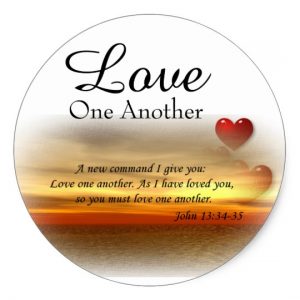
10:24&version=NLT">Hebrews 10:24 also says, “Let us think of ways to motivate one another to acts of love and good works.”
Join us again next Friday as we further explore the Enneagram on our Ask Gramps episode. We will continue to explore type combinations and how best to maintain meaningful and productive relationships with each other. The information that we discover will allow us to unlock who we are as we travel on our trek of life and discover more about ourselves and others as we impact God’s kingdom. I know you will find these insights interesting, practical, and profitable in living a rich and satisfying life.
Our next trek is Mediation Monday when we will help you reflect on what is most important in life. So encourage your friends and family to join us and then come along on Monday for another day of our Wisdom-Trek, Creating a Legacy.
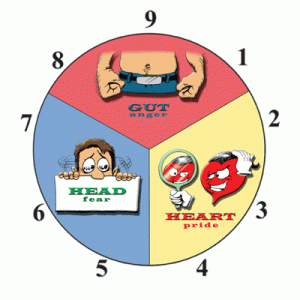
If you would like to listen to any of the past 1037 daily treks or read the associated journals, they are all available at Wisdom-Trek.com. I encourage you to subscribe to Wisdom-Trek on your favorite podcast player so each day will be downloaded to you automatically.
Thank you for allowing me to be your guide, mentor, and most of all your friend as I serve you through the Wisdom-Trek podcast and journal.
As we take this trek together, let us always:
- Live Abundantly (Fully)
- Love Unconditionally
- Listen Intentionally
- Learn Continuously
- Lend to others Generously
- Lead with Integrity
- Leave a Living Legacy Each Day
I am Guthrie Chamberlain reminding you to Keep Moving Forward, Enjoy Your Journey, and Create a Great Day Everyday! See you on Monday!
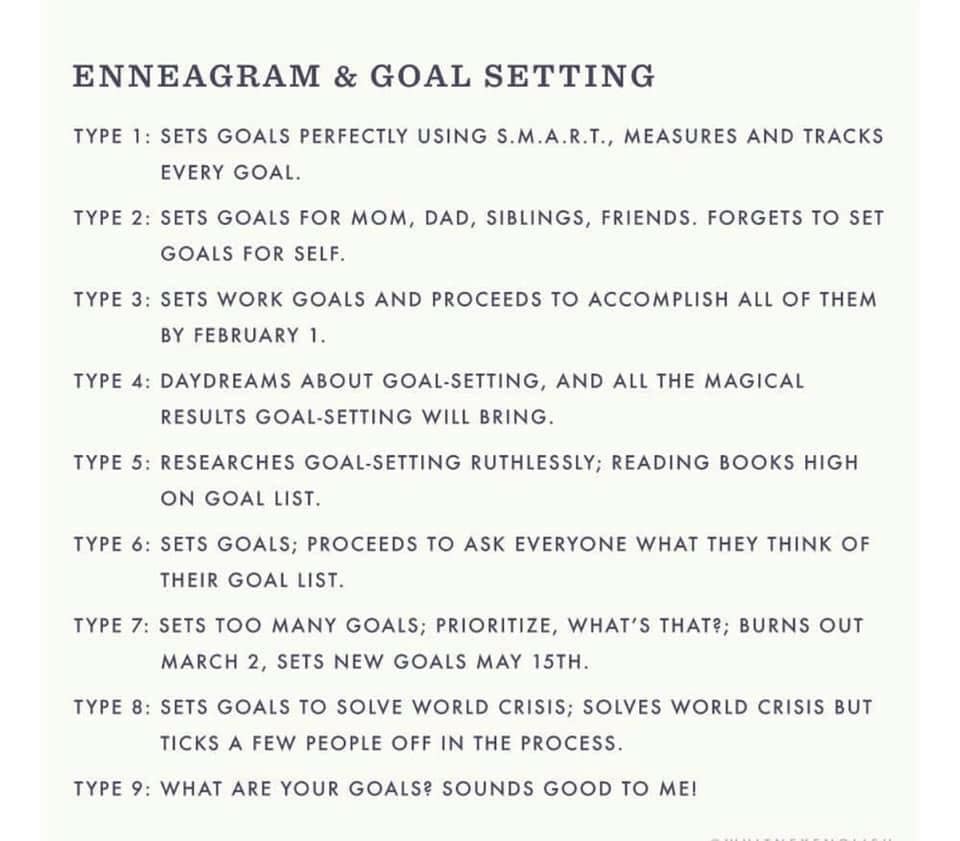
Know thyself. Thanks for some great analysis that helps us see how to move forward and why we struggle if we’re not.